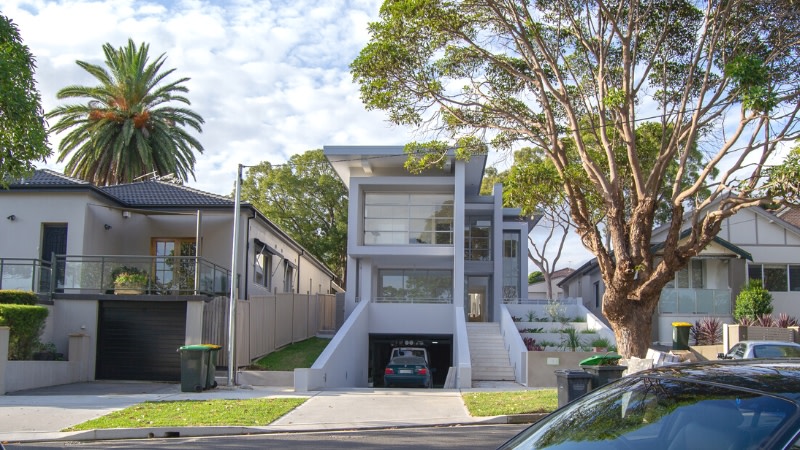Supply Shortfalls, Demand Drive Home Price Bounce

Home prices bounced in February as the downturn lost momentum, with limited supply and sustained buyer demand supporting property values.
Data for last month released by PropTrack showed nationally home prices were up 0.18 per cent month-on-month in February.
The trend was backed up by CoreLogic’s Home Value Index, which also recorded a sharp reduction in the rate of decline through February.
Its national index declined -0.14 per cent over the month, the smallest monthly fall since May 2022 (-0.13 per cent), when rate hikes began.
PropTrack said prices improved in every capital except Hobart, which declined 0.29 per cent.
Adelaide led the way, up 0.44 per cent, followed by Sydney’s 0.36 per cent and Melbourne with 0.18 per cent.
Rises were softer in Brisbane (+0.12 per cent), Perth (+0.13 per cent) and Darwin (+0.04 per cent) while prices in Canberra were unchanged.
The uplift in Sydney followed a revised increase in January of 0.26 per cent.
Despite the recent stall in the downturn, prices are down 6.64 per cent over the past year, with Sydney experiencing the largest falls of any market.
However, price declines in Sydney have reversed in recent months with fewer homes on the market.
Conditions in Brisbane shifted last year due to the substantial tightening in interest rates and prices are now 3.49 per cent below the April 2022 peak.
The total number of properties listed for sale in Brisbane is down almost 30 per cent on the previous five-year average.
In Melbourne, prices are now down 5.99 per cent over the past 12 months and remain 6.09 per cent below the March 2022 peak.
PropTrack said that although activity in the housing market had fallen as interest rates quickly rose, the limited stock available for sale had led to a pickup in competition among potential buyers, insulating home values.
And while home prices have fallen from their peak in most markets, prices nationally are still 29.4 per cent above their pre-pandemic levels.
The rise nationally last month follows a small (0.09 per cent) uplift in January for revised national home.
“However, it is too early to call an end to the downturn,” a PropTrack spokesperson said.
“While interest rates have been the primary driver of home price falls to date, there are factors beyond interest rates at play.
“Sellers in market now are benefitting from low competition with other vendors, as buyers vie for available stock.
“The constrained level of properties available for sale is “putting a floor” under home prices and has concentrated buyer demand.
“The longevity and depth of the current downturn will be influenced by the level of supply, as well as the trajectory of interest rates, in the months ahead.”

Sydney’s rise the driver
CoreLogic said a 0.3 per cent rise in Sydney home values was the most significant driver of the national deceleration, however, the loss of downwards momentum was broad-based. Darwin (-0.3 per cent) was the only capital city to record a steeper monthly fall in February, albeit from relatively flat conditions previously.
Every other capital city except Hobart (-1.4 per cent) had housing values fall by less than half a per cent over the month.
CoreLogic research director Tim Lawless said the stabilisation in housing values over the month coincided with consistently low advertised supply levels and a rise in auction clearance rates.
“The past four weeks have seen the flow of new capital city listings tracking 17.0 per cent lower than a year ago and 11.9 per cent below the previous five-year average,” Lawless said.
“This trend towards a below average flow of new listings has been evident since September last year, coinciding with a loss of momentum in the rate of value decline.”
Auction clearance rates also bounced back through February, CoreLogic found, with the capital city weighted average reaching the high 60 per cent range through the second half of the month, while Sydney clearance rates rose to above 70 per cent in the week ending February 19, the first time since February 2022.
“Considering the RBA’s move to a more hawkish stance at the February board meeting, along with an expectation for a weaker economic performance and a loosening in labour markets, there is a good chance this reprieve in the housing downturn could be short-lived,” Lawless said.
“We also have the fixed-rate cliff ahead of us; arguably the full impact of the aggressive rate hiking cycle is yet to play out.”
Regional home values were down 0.3 per cent in February compared to a 0.1 per cent fall across the combined capital cities.
However, the weaker regional result relative to the combined capitals was mostly a factor of the monthly rise in Sydney housing values rather than a larger fall in regional market values.
Each of the broad rest-of-state regions, apart from NSW, recorded a monthly outcome that was inline or stronger relative to their capital city counterparts.
Since peaking in June last year, the combined regionals index is down 7.7 per cent, compared to a 9.7 per cent drop in the combined capital cities index, which peaked slightly earlier in April 2022.
Regional housing values remain 30.7 per cent above levels recorded at the onset of Covid in March 2020, while the combined capitals index is 10.4 per cent higher.














